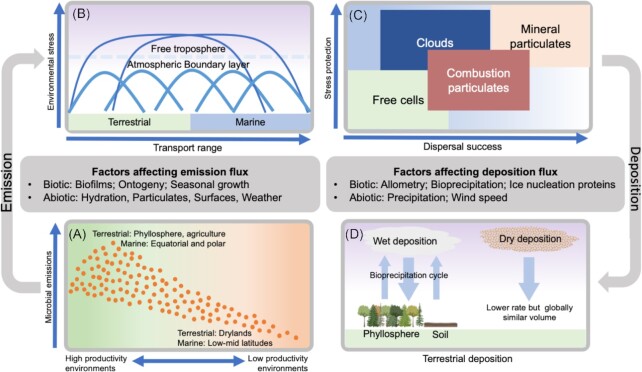Figure 4.
Factors affecting atmospheric microbial transport and macroecological outcomes. (A) Emission and recruitment of microorganisms to the atmosphere are strongly dependent on the underlying surface habitats. This includes major delineations between terrestrial and marine locations, and a strong influence of productivity in underlying habitats. Biotic traits may also be important to emission variations between taxa. (B) Above terrestrial and marine surfaces at local scales transport occurs largely within the atmospheric boundary layer over relatively short distances. At larger spatial scales microbial transport involves transit above the boundary layer and this results in longer residence times and greater environmental filtering.(C) The association of cells with clouds or particulates directly impacts survival and transport. Combustion particulates may be less efficient vectors than mineral particles from desert dust and soil because they co-aerosolize with lower numbers of microorganisms, and they are associated with toxic combustion products. (D) Deposition of cells from the atmosphere occurs via wet deposition as rainfall, hail and snow, and via dry deposition that relies on sedimentation of cells due to gravity and occurs at lower velocities than wet deposition. Wet deposition over continents is typically induced by ice nucleation, which leads to preferential deposition of ice nucleation active cells and contributes to bioprecipitation and other feedbacks.

